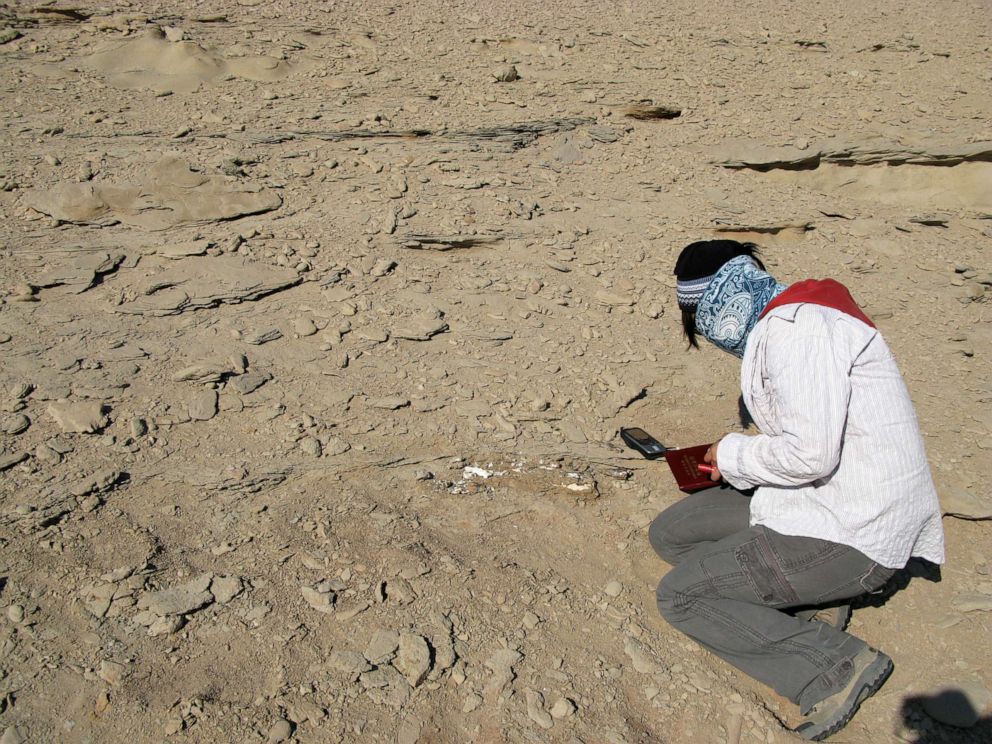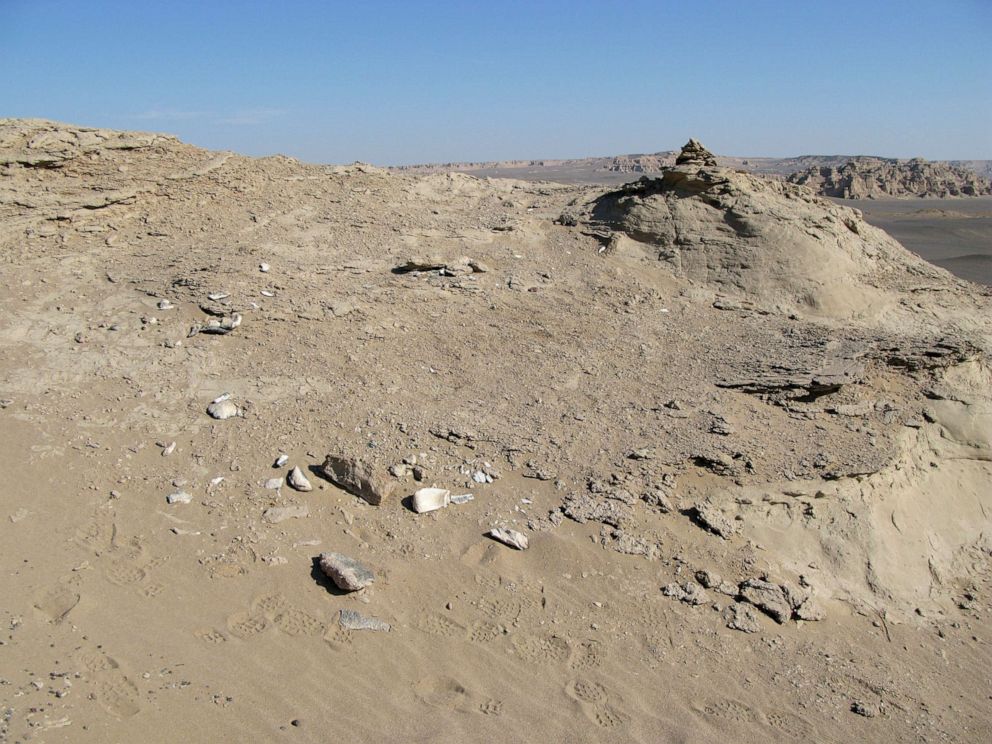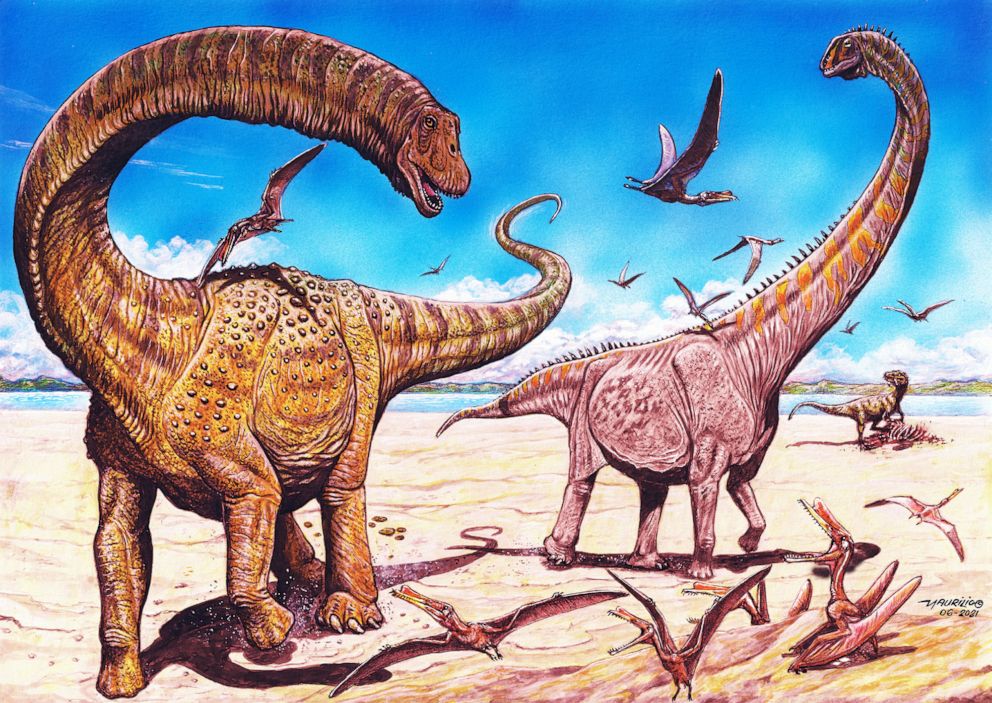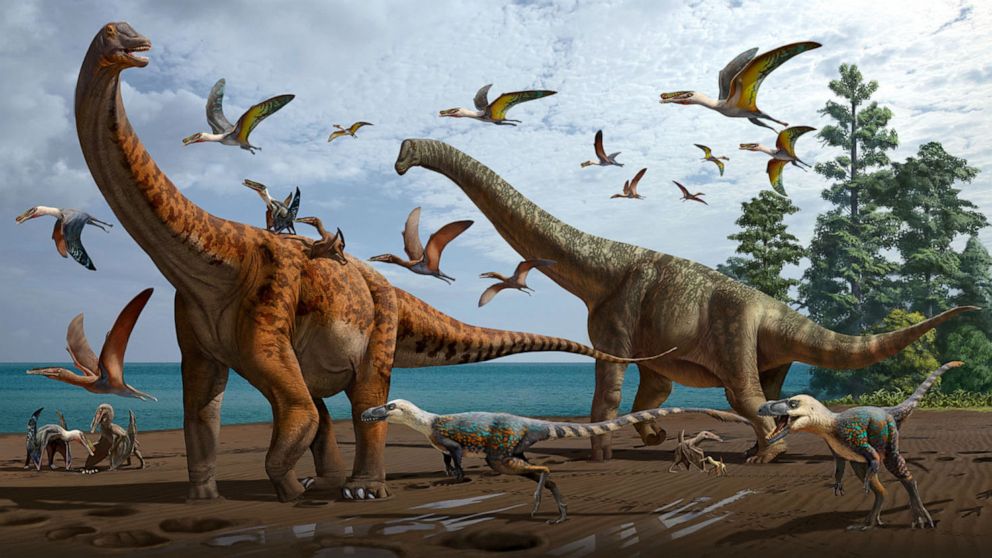Researchers believe there are also sauropod nests with eggs in the region.
By Julia Jacobo
Scientists have discovered two new species of dinosaurs in a region where dinosaur fossils had never been unearthed.
Fossils from three different dinosaurs dating to the Early Cretaceous period, about 130 to 120 million years ago, were recently uncovered in the Turpan-Hami Basin in northwest China, according to a study published Thursday in Nature Scientific Reports. Dinosaur fossils had never been reported there before, scientists said.

The dinosaur fossils before the collection.
The first specimen, Silutitan sinensis, is a new species of sauropod, an herbivore characterized by having a very long neck, long tail, large body and small head, according to study.
The dinosaur was found to have some characteristics in its neck vertebrae that indicate it belonged to a family of sauropods called Euhelopodidae, which have so far only been found in East Asia. Scientists believe the sauropod to have measured at more than 65 feet long.

The second specimen, Hamititan xinjiangensis, is estimated to have been more than 55 feet long and contained characteristics more similar to sauropods found in South America, the researchers said.
The shape and ridges along the vertebrae suggest that it belonged to a family of sauropods known as Titanosaurs, which were abundant in both Asia and South America.

«We were very excited about that part of the study, and now it’s kind of a puzzle that we have to understand,» Brazilian paleontologist Alexander Kellner, co-author of the study and director of the National Museum in Rio de Janeiro, told ABC News. «How did this almost ‘South American’ dinosaur ended up being in Asia?»
The scientists plan to keep on digging to find out, Kellner said. He and his colleagues at the Chinese Academy of Sciences in Beijing believe that hidden beneath the surface in the region are nests filled with eggs and embryonic remains of the newly discovered species, Kellner said.
«We keep dreaming about finding dinosaur nests there,» he said. «This is our greatest hope so far.»

The third specimen found on the site, limited to four vertebrae and rib fragments, may be a somphospondylan sauropod, a group of dinosaurs that lived from the late Jurassic period, about 160.3 million years ago, to the late Cretaceous period, about 66 million years ago, according to the study.





